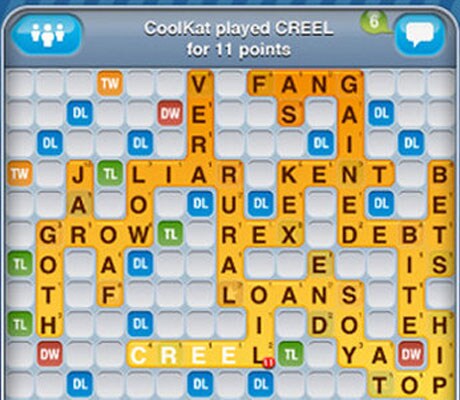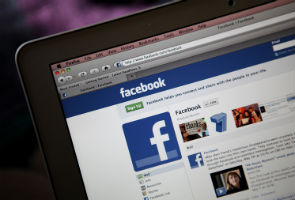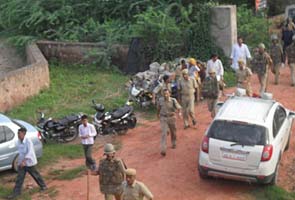
Several months ago, when Prabhu Kumar could not find a book he wanted in bookstores here, he found it online at Amazon.com for $10. But he had to pay more than $9 in fees to have Amazon ship it to him.
Mr. Kumar, a software programmer, said he would not be doing that again. He now shops on India's answer to Amazon -- FlipKart.com -- which delivers books, phones and other items in as little as 24 hours at no extra cost. Mr. Kumar doesn't have to pay FlipKart a single rupee until a courier bearing his books arrives at his door. He can then hand over cash or a credit card.
"I think it perfectly fits the Indian mentality," Mr. Kumar said.
While dozens of electronic commerce firms have recently sprung up to capitalize on India's growing Internet use, they have a problem. Indians are not yet comfortable with shopping on the Web. Many of them remain unwilling to use credit cards online. So the Indian retailers have gone to great lengths to gain customers. Customers may pay in cash on delivery, and the company fields delivery squads to ensure shipments get to customers quickly.
One recent afternoon, four FlipKart delivery men loitered at a bungalow in the Koramangala section of Bangalore where the company started. When a small delivery van arrived from the company's warehouse, the men rushed to take out two large duffel bags filled with packages that they put onto two tables in the house.
After scanning the packages with hand-held computers, they put the boxes into large backpacks, which they carried on their backs as they rode off on motorcycles to deliver them.
Online sales still make up a small portion of overall retail spending -- one estimate pegs it at $10 billion, a tiny fraction of India's $500 billion retail market -- but they are growing fast.
FlipKart says it had revenue of 500 million rupees ($11 million) in its last fiscal year, and is now clocking sales of about 10 million rupees a day. SnapDeal.com, a coupon and deals site similar to Groupon, expects sales of 1.5 billion rupees this year, up from almost nothing the year before. The top executives of the Future Group, India's largest retail company, says its daily online sales are on pace to triple between now and March.
"This time it is for real," said Kishore Biyani, the founder and chief executive of the Future Group, referring to an earlier wave of e-commerce euphoria in the early 2000s. "This is the biggest thing to happen in India."
That rapid growth has drawn the attention of venture capitalists who poured $183 million into 20 e-commerce firms in the last 12 months, up from $61 million for 13 firms in the previous 12 months, according to Venture Intelligence, a research firm.
The rapid growth has also attracted the notice of American online retailers. Amazon, which has a software development office in Bangalore, is now building a warehouse and hiring employees for an Indian site, according to two industry officials. And earlier this year, Groupon bought an Indian Web site, SoSasta.com.
But, like in frothy Silicon Valley, some Indian analysts and investors are starting to question the frenzied deal-making. These skeptics find it difficult to justify the high prices venture capitalists are paying to invest in unprofitable Indian e-commerce firms. For instance, VCCircle, a news site, recently reported that FlipKart may soon raise $150 million, which would give it a $1 billion valuation. (Executives at the company declined to discuss its financial plans.)
India has 50 million to 100 million Internet users, according to various analysts, and the number is growing by about 30 percent a year. JuxtConsult, a New Delhi-based research firm, estimates that 17 million people bought something online this year, up from 10 million last year. The Indian government estimates that household consumption has increased by more than two-thirds in the last five years, and most of that increase has come in the purchase of nonfood items.
"It seems to be more for real than a flash in the pan," said Kanwaljit Singh, who is a senior managing director at Helion Advisors, which has invested in about a half-dozen Indian e-commerce sites, including MakeMyTrip.
But capitalizing on India's growth online will not be easy. Sachin Bansal and Binny Bansal (who are not related), the founders of FlipKart, have had to do things that their American or European counterparts would never have. They have set up delivery operations in 13 big Indian cities like Bangalore, Mumbai and New Delhi because Indian shippers do not have the delivery and package-tracking abilities that FedEx and U.P.S. provide for its American customers. They plan to expand FlipKart's delivery network to 25 cities within a year.
Sachin Bansal, the company's chief executive, said that by having its own staff, FlipKart avoids paying courier services' commissions of more than 2 percent to accept cash on delivery, which make up about 60 percent of its orders. It can also track packages more accurately. And because labor costs are relatively low in India, its delivery cost is a modest $1 a package.
"More than 90 percent of retail transactions in India are in cash," Mr. Bansal said. "People like my dad and my uncle, they are much more comfortable with cash. If we have to increase our customer base, we have to accept cash."
FlipKart is not alone in tweaking its model to suit Indian conditions. Myntra, an online retailer of clothes, has a delivery staff in Bangalore and plans to hire couriers in other cities. SnapDeal offers customers the option of making partial payments online and paying the balance to merchants whose products and services it sells, said Kunal Bahl, a co-founder of the service.
Consumers and suppliers laud FlipKart's service and execution. But they expect the company to soon face greater competition, especially if Amazon starts an Indian operation. "Today they are the best," said Ananth Padmanabhan, vice president for sales at Penguin India. But, he asked, "if Amazon comes here next month, and they might, what will FlipKart do?"
An Amazon spokesman, Craig Berman, declined to comment on the company's plans for India, but Mr. Padmanabhan said Amazon officials have been holding talks with publishers, and another industry official said the retailer has begun hiring employees for an Indian site.
The Bansals say they are prepared for competition from Amazon. Sachin Bansal, who worked with Binny Bansal as a software developer at Amazon before starting FlipKart, brushed aside a suggestion that the firm would make for an easy acquisition by Amazon.
"We are very keen on going our own way," he said. "The opportunity is so large that we would want to grow it to a much bigger level before we think of anything."
Mr. Kumar, a software programmer, said he would not be doing that again. He now shops on India's answer to Amazon -- FlipKart.com -- which delivers books, phones and other items in as little as 24 hours at no extra cost. Mr. Kumar doesn't have to pay FlipKart a single rupee until a courier bearing his books arrives at his door. He can then hand over cash or a credit card.
"I think it perfectly fits the Indian mentality," Mr. Kumar said.
While dozens of electronic commerce firms have recently sprung up to capitalize on India's growing Internet use, they have a problem. Indians are not yet comfortable with shopping on the Web. Many of them remain unwilling to use credit cards online. So the Indian retailers have gone to great lengths to gain customers. Customers may pay in cash on delivery, and the company fields delivery squads to ensure shipments get to customers quickly.
One recent afternoon, four FlipKart delivery men loitered at a bungalow in the Koramangala section of Bangalore where the company started. When a small delivery van arrived from the company's warehouse, the men rushed to take out two large duffel bags filled with packages that they put onto two tables in the house.
After scanning the packages with hand-held computers, they put the boxes into large backpacks, which they carried on their backs as they rode off on motorcycles to deliver them.
Online sales still make up a small portion of overall retail spending -- one estimate pegs it at $10 billion, a tiny fraction of India's $500 billion retail market -- but they are growing fast.
FlipKart says it had revenue of 500 million rupees ($11 million) in its last fiscal year, and is now clocking sales of about 10 million rupees a day. SnapDeal.com, a coupon and deals site similar to Groupon, expects sales of 1.5 billion rupees this year, up from almost nothing the year before. The top executives of the Future Group, India's largest retail company, says its daily online sales are on pace to triple between now and March.
"This time it is for real," said Kishore Biyani, the founder and chief executive of the Future Group, referring to an earlier wave of e-commerce euphoria in the early 2000s. "This is the biggest thing to happen in India."
That rapid growth has drawn the attention of venture capitalists who poured $183 million into 20 e-commerce firms in the last 12 months, up from $61 million for 13 firms in the previous 12 months, according to Venture Intelligence, a research firm.
The rapid growth has also attracted the notice of American online retailers. Amazon, which has a software development office in Bangalore, is now building a warehouse and hiring employees for an Indian site, according to two industry officials. And earlier this year, Groupon bought an Indian Web site, SoSasta.com.
But, like in frothy Silicon Valley, some Indian analysts and investors are starting to question the frenzied deal-making. These skeptics find it difficult to justify the high prices venture capitalists are paying to invest in unprofitable Indian e-commerce firms. For instance, VCCircle, a news site, recently reported that FlipKart may soon raise $150 million, which would give it a $1 billion valuation. (Executives at the company declined to discuss its financial plans.)
India has 50 million to 100 million Internet users, according to various analysts, and the number is growing by about 30 percent a year. JuxtConsult, a New Delhi-based research firm, estimates that 17 million people bought something online this year, up from 10 million last year. The Indian government estimates that household consumption has increased by more than two-thirds in the last five years, and most of that increase has come in the purchase of nonfood items.
"It seems to be more for real than a flash in the pan," said Kanwaljit Singh, who is a senior managing director at Helion Advisors, which has invested in about a half-dozen Indian e-commerce sites, including MakeMyTrip.
But capitalizing on India's growth online will not be easy. Sachin Bansal and Binny Bansal (who are not related), the founders of FlipKart, have had to do things that their American or European counterparts would never have. They have set up delivery operations in 13 big Indian cities like Bangalore, Mumbai and New Delhi because Indian shippers do not have the delivery and package-tracking abilities that FedEx and U.P.S. provide for its American customers. They plan to expand FlipKart's delivery network to 25 cities within a year.
Sachin Bansal, the company's chief executive, said that by having its own staff, FlipKart avoids paying courier services' commissions of more than 2 percent to accept cash on delivery, which make up about 60 percent of its orders. It can also track packages more accurately. And because labor costs are relatively low in India, its delivery cost is a modest $1 a package.
"More than 90 percent of retail transactions in India are in cash," Mr. Bansal said. "People like my dad and my uncle, they are much more comfortable with cash. If we have to increase our customer base, we have to accept cash."
FlipKart is not alone in tweaking its model to suit Indian conditions. Myntra, an online retailer of clothes, has a delivery staff in Bangalore and plans to hire couriers in other cities. SnapDeal offers customers the option of making partial payments online and paying the balance to merchants whose products and services it sells, said Kunal Bahl, a co-founder of the service.
Consumers and suppliers laud FlipKart's service and execution. But they expect the company to soon face greater competition, especially if Amazon starts an Indian operation. "Today they are the best," said Ananth Padmanabhan, vice president for sales at Penguin India. But, he asked, "if Amazon comes here next month, and they might, what will FlipKart do?"
An Amazon spokesman, Craig Berman, declined to comment on the company's plans for India, but Mr. Padmanabhan said Amazon officials have been holding talks with publishers, and another industry official said the retailer has begun hiring employees for an Indian site.
The Bansals say they are prepared for competition from Amazon. Sachin Bansal, who worked with Binny Bansal as a software developer at Amazon before starting FlipKart, brushed aside a suggestion that the firm would make for an easy acquisition by Amazon.
"We are very keen on going our own way," he said. "The opportunity is so large that we would want to grow it to a much bigger level before we think of anything."




